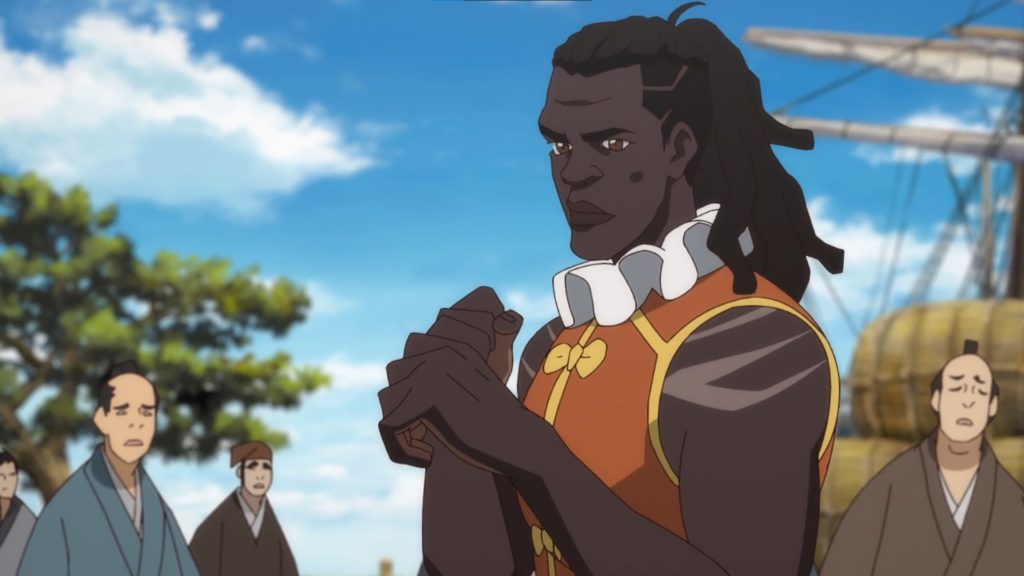Books: Anime Streaming Platform Wars
January 19, 2022 · 0 comments
By Jonathan Clements.

Sneaked out this week by Concordia University’s Platform Lab, Anime Streaming Platform Wars might sound like an oddly business-focussed computer game, but is actually a fantastic academic resource on the modern anime business. Relatively short at just 34 pages, it corrals concise appraisals of the major players in the modern anime business, refracted through the work of half a dozen researchers.
As we’ve pointed out here before, in reviews of Ramon Lobato’s Netflix Nations, and Catherine Johnson’s Online TV, the nature of the anime business has entirely transformed over the last few years, as distribution switched away from the oh-so-nineties customer journey to a bricks-and-mortar store to buy a physical media object, to a flood of new serials, hurled at your eyeballs before they have even finished airing in Japan. Two years of pandemic lock-in have only consolidated anime fans’ interest in streaming services, but editor Aurélie Petit’s collection of articles points would-be anime historians at some of the boardroom manoeuvres and skulduggery behind the simple announcements of new shows that characterise this blog’s periodic streaming round-ups. And let me put this in shocking historical context for you: Netflix has only been operating in Japan since 2015.
In a nicely global touch befitting a truly global medium, Aurélie Petit devotes a section to the fortunes of Crunchyroll in France, while Elena Altheman examines the company’s fortunes in the massive anime market of Brazil, which, as she notes, houses the largest community of people of Japanese descent outside of Japan itself. Jacqueline Ristola offers insights into the tumultuous past of Crunchyroll, from its early days as a dodgy dealer, through the series of venture capital investments and media tie-ups that led it to scrub up and become a major player in the anime world, up to its recent acquisition by Sony, which she regards as a play for global integration. As noted in Santino Ciarma’s matching history of Crunchyroll’s former rival Funimation, the companies were duking it out in the US market, but a truce was declared when both were acquired in short order by Sony. And then there’s Petit again on Amazon, which inaugurated Anime Strike in 2017, only to fold it into the broader Prime Video service a year later.
The concise nature of the document means that the authors do not have much space to discuss the overwhelming affect that all this has had on production in Japan. There are, however, some intriguing sidebars, such as Victoria Berndt’s account of N-ko, the animated presenter created by Netflix as the public face of their channel, inexplicably half-girl, half-sheep.

This isn’t the first time that overseas demand, or implied demand, has skewed the content made in Japan, a phenomenon which frankly dates back to both Hakujaden and Astro Boy, but it is on an utterly huge scale in the 2020s. Petit’s punchy collection also has some amusing speculations on some of the unexpected fall-outs from the grand scramble for content. She wonders, for example, if the arrival of RetroCrush in 2020, which streams “golden age” anime in the USA, is going to cause an irate backlash in fandom on account of “cultural fracking”. Fansubbers’ arguments, you see, being that they are fansubbing these shows because they are not formally available in English, and now they bloody are!
Access, distribution and exhibition, have all been transformed by the digital enclosures of recent years, but any industry insider will tell you that there have been similar disruptions at other levels of the business. It’s not just about the likes of Crunchyroll and Amazon funding their own serials, it’s what that means on the ground in Japan, where studios for the last few years are getting booked out literally years in advance to make content for the new Moneybags. There’s much still be written about this – just look, for example, at Callum May’s pithy account of the short-lived experiment that was Crunchyroll Studios Tokyo, essentially a workspace for several independent studios to set up temporary camp under the Crunchyroll logo, shut down after two years because you really don’t need everyone in the same building to get anime done, particularly in an age when telecommuting is the new normal. May’s piece also points to the growing issue, touched upon also in Stevie Suan’s recent book Anime’s Identity, on the sort of work that gets created when anime is not made by a little studio hoping to sell 500 bespoke box sets to a bunch of weebs, but by an international conglomerate that wants magic content that will somehow appeal to viewers in Seoul, Buenos Aires and New York simultaneously.
Colin Crawford and Elena Altheman do allude to all this in their section on Netflix, which they observe is “…altering the Japanese and production industries through the sheer scale of its investments, creating more demand and pushing anime beyond the aesthetic limits of Japanese broadcast law.” In other words, Yasuke wouldn’t have been made by the Japanese in the way it was made by Netflix and LeSean Thomas, even though the Japanese were pressing the buttons and twiddling the dials, or whatever it is animators do these days.
Jonathan Clements is the author of Anime: A History. Anime Streaming Platform Wars is available for free download from Concordia University.
Leave a Reply